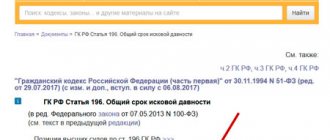At a general meeting of property owners in an apartment building (AMD), decisions are made exclusively by voting. Such voting can take place not only in the personal presence of the owners, but also in absentia, when citizens give their response to the agenda in writing on a specially designed form.
Regardless of the issue on which the meeting of owners was scheduled and in what form it takes place, it is very important to know the procedure by which votes should be counted in the HOA. At an in-person meeting, it is also necessary to draw up a protocol, which can be any standard one, as well as attendance sheets, which must be signed by the participants present. In addition, if we talk specifically about the in-person meeting, referring to Article 45 of the Current Housing Code of the Russian Federation, it cannot be held if the owners present at it have less than fifty percent of the votes. At the same time, you need to know that the number of such is calculated not by the number of residents and apartments, but by area.
Accordingly, this means that you should carefully prepare for a meeting of homeowners, especially when a clearly important issue is being resolved. Everyone present must know the exact total area in the apartment building, have their own personal passport and papers confirming their right to own the premises (copies are possible).
How to correctly count votes at a general meeting of owners, what to take as 100%.
September 26, 2019
When counting votes, as well as when challenging decisions of a general meeting, one of the most important roles is played by the presence or absence of a quorum.
A decision made without a quorum is considered invalid due to nullity, that is, regardless of the existence of a court decision on this issue: the State Housing Property Committee may refuse to make changes to the register of licenses, and the Criminal Code, having received a protocol from the initiator with a dubious quorum, may refer to the lack of quorum, then do not implement the decisions made. Therefore, when holding a meeting, it is necessary to pay special attention to ensuring a quorum: ensure that ballots are filled out correctly, votes are correctly counted and the total number of votes owned by the owners is correctly determined.
To invalidate the decision, the easiest way for the opposition to direct its efforts is to “collapse” the quorum. This can be done by deducting incorrectly completed ballots, or by challenging the total area (total number of votes), which is indicated as 100% in the house and from which the count was carried out.
Judicial practice on the procedure for counting votes is not completely stable, but in general a generalization can be made from it.
Our staff will help you: - prepare a full package of documents for the general meeting of owners with a guarantee of acceptance of documents by the Housing Inspectorate. — update the register of owners based on the FSIS EGRN of Rosreestr. — make personalized forms for each resident. Our experience is more than 5 years and several thousand successful meetings, even in the most conflict-ridden homes. Call us 8-800-100-24-97 (toll-free) or write
The Housing Code only states that the number of votes of each owner is proportional to his share in the right of common ownership of common property (Part 3, Article 48), and such share is proportional to the area of the premises owned (Part 1, Article 37). That is, the number of votes directly depends on the size of the room.
Therefore, it is completely incorrect to count votes by the hands, heads and other parts of the owner’s body. This calculation was adopted at a meeting of members of the cooperative, which is not related to this article.
In practice, there are two common methods of counting votes. These options are well described in the methodological materials posted on the website of the Moscow regional overhaul operator. Let's briefly recap these methods.
Based on the total area of the apartment (non-residential premises) of the owner (taking into account his share, if the property is shared): 1 sq. m of total floor area gives 1 vote.
For example, if the size of the apartment is 30.6 square meters. m and it has one owner, then he has 30.6 votes. If there are 2 owners of such an apartment, and each share is ½, then each owner will have 15.3 votes.
The advantages of the method: stability of counting in the event of a change in the total area of residential and non-residential premises, any resident is able to count how many votes he has.
Examples from practice. The ruling of the Kurgan Regional Court dated April 16, 2019 in case No. 33-1035/2019: “the judicial panel also rejects the argument of the claim about the incorrect procedure for counting votes, since the chosen method is based on 1 square. m of area belonging to the owner of the residential premises, equal to 1 vote, complies with the provisions of Part 3 of Art. 48 Housing Code of the Russian Federation."
The same approach is found in the appeal rulings of the Moscow City Court of September 26, 2021 in case No. 33-26233/2018, of May 22, 2021 in case No. 33-20123 and other decisions, but the courts do not give a detailed assessment of this method of calculation , but they just use it.
Based on the owner’s share in the right of common ownership of common property.
The size of the resident’s premises is taken, taking into account the share (if the premises have several owners), divided by the total area of residential and non-residential premises of all owners in the apartment building (excluding common property), and multiplied by the proportionality coefficient (100, 1000, etc.)
The coefficient determines the total number of votes of owners. If the value of the coefficient is taken equal to 100, this means that the total number of votes of all potential participants in the meeting is equal to 100. With a coefficient = 1000, the total number of votes is equal to 1000. It is recommended to take the value of the proportionality coefficient based on the number of premises: the more of them, the greater the coefficient so that owners had at least 1 vote.
Some do without this coefficient: the number of votes of a resident is taken as the size of his premises, taking into account the share and divided by the total area of all residential and non-residential premises. Then everyone’s votes are obtained in the form of hundredths and thousandths, and their sum gives 1.
Disadvantages of this method: complexity of calculation - a resident cannot count his votes; they have to be determined by the initiator of the meeting. When the total area of residential and non-residential premises changes (extension, reconstruction, clarification of information), the number of votes of each owner changes. Taking into account the fact that they must be indicated on ballots, then recalculating the number and making corrections can be problematic.
Example from practice. Determination of the Moscow City Court dated August 14, 2021 in case No. 33-31916: “the sum of the shares of all owners of premises is 100% of the share and votes, and the share of a particular owner is the result of dividing the total area of his premises by the sum of the total areas of all premises in the house, which do not belong to common property."
The counting of votes at a meeting of HOA members is similar, however, only the total area of those premises that are owned by HOA members, and not all owners, is taken as 100%.
Example from practice. Determination of the Sverdlovsk Regional Court dated April 17, 2019 in case No. 33-5527/2019: “the competence of the general meeting of HOA members is determined in two stages: first, the total size of the premises and the number of votes belonging to the owners are established, and after that the total number of HOA members and the size are established premises belonging to them, which should be taken as 100% and from which the presence or absence of a quorum at the general meeting of HOA members should be determined.”
About the total area of the premises.
Some courts take into account not the total area of apartments and non-residential premises, but the area of the entire house. Is it necessary to explain what consequences this approach leads to? I am glad that this practice is not widespread and reasonableness in this matter still prevails.
Examples from practice.
Determination of the Samara Regional Court dated January 17, 2019 No. 33-605/2019: “in resolving the dispute, the court proceeded from the fact that, according to the information contained in the Unified State Register, the area of the house is 23,699.20 square meters. m and it is this area that was accepted by the court when calculating the quorum. However, at the meeting, the number of votes of the owner depends on the size of his premises. When determining the votes that the owner has, the calculation must be made based on the area of residential and non-residential premises, and not on the area of the building as a whole.”
Determination of the Kurgan Regional Court dated May 16, 2021 in case No. 33-1342/2019: “When calculating the quorum, the court took into account the total area of the house, established according to the information of the State Budgetary Institution “State Center for Cadastral Valuation and Real Estate Registration.” The panel of judges considers this calculation to be erroneous. Calculating the quorum based on the total area of the house violates the principle of proportion, since the total number of votes of all owners, calculated without determining their share in the common property, will obviously be less than 100%. The protocol determines that 1 vote corresponds to 1 m2 of his premises (without taking into account his share in the right of common ownership of common property). In this case, the total number will be equal to the number of meters of premises they occupy.”
Determination of the Kurgan Regional Court dated March 26, 2019 in case No. 33-814/2019: “The calculation at the general meeting was carried out based on the size of the premises belonging to the owners, without taking into account the area of common premises that fell to their share, and therefore the calculation was lawfully taken the total living area of the house."
Ruling of the Moscow City Court dated March 22, 2019 in case No. 33-12522/2019: when calculating the quorum, the court also used the size of premises owned by citizens, without taking into account balconies and loggias. The same approach was used in the ruling of the same court dated October 2, 2021 in case No. 33-37649.
Determination of the Moscow City Court dated May 16, 2019 No. 33-9168/2019: this decision is interesting because 100% was taken to be the total area of the premises for which ownership was registered. “State registration of a right in the Unified State Register of Real Estate is the only evidence of the existence of a registered right. Thus, the court agreed with the defendant’s arguments that the disputed premises during the meeting were not individualized property and could not be taken into account when determining shares in the right of common shared ownership of common property. Thus, the persons carrying out the count rightfully proceeded from the size of the premises belonging to the residents and the total area of all residential and non-residential premises of the house registered as property, taking into account the data from the register of owners for the period of the meeting.”
Some courts give priority to information from the technical passport rather than Rosreestr, which must be taken into account if there is a prospect of challenging the decision.
Examples from the practice of counting votes at a general meeting.
Determination of the Omsk Regional Court dated August 22, 2019 in case No. 33-5107/2019: “The panel of judges notes that when comparing the USRN data on the areas of residential premises with the data of the technical passport of the house, data from title documents, it is obvious that the USRN information does not correctly reflect the data on area of premises. In this connection, when calculating the quorum, the board considered it possible to be guided by the information from the technical documentation.”
Ruling of the Sverdlovsk Regional Court dated March 6, 2021 in case No. 33-3393/2019: the defendants believed that the number of votes should be calculated based on the total area of the premises determined according to the Unified State Register of Real Estate, and not according to the technical passport, but the courts used it for counting the total usable area of residential and non-residential premises, indicated specifically in the technical documentation. It turned out to be larger than the area in the Unified State Register of Real Estate, which led to the conclusion that there was no quorum.
If you are holding a meeting, then try (at least mentally) to focus on the largest area possible; it will most likely be different in different sources - GIS Housing and Communal Services, Reforma Housing and Communal Services, Unified State Register of Real Estate and registration certificate.
Our staff will help you: - prepare a full package of documents for the general meeting of owners with a guarantee of acceptance of documents by the Housing Inspectorate. — update the register of owners based on the FSIS EGRN of Rosreestr. — make personalized forms for each resident. Our experience is more than 5 years and several thousand successful meetings, even in the most conflict-ridden homes. Call us 8-800-100-24-97 (toll-free) or write
Voting and election of the chairman of the board
The voting of owners is the main “legislative” mechanism in a particular house. It is held after discussion of almost every item on the agenda, so voting should be considered an integral part of any HOA meeting.
Owners' associations use two forms of voting: in-person and absentee. With the in-person option, meeting participants vote directly during the meeting at the location where it is held.
Absentee voting is carried out by filling out ballots sent to all apartment owners.
What is absentee voting?
In essence, this is the transfer of decisions of the owners on issues raised by the chairman of the HOA to the governing bodies of the partnership.
Absentee voting looks like this : the owner takes a ballot from his mailbox, reads it carefully and votes on each designated issue. The completed ballot is placed in the mailbox of the secretary of the board (or sent to another address that is written on this paper).
Absentee voting is especially convenient for homeowners in large buildings with many apartments. The more people there are, the more difficult it is for at least half of them to gather in one place at one time. Under these conditions, the correspondence form becomes the optimal solution.
If the ballot is about choosing a way to manage a house, the votes of the majority of the owners (over 50%) will be needed to make a decision. If such issues as repair of common property, use of the site, construction of various households are considered. structures or carrying out other large-scale work - you need to collect the votes of at least two-thirds of the total number of owners.
The voting results are counted by members of the HOA board or a commission specially created for this purpose.
Here is one example:
Protocol
The voting minutes are similar to the minutes of a meeting - they indicate the items voted on, the number of votes cast for each option, and the decision on the issue.
Total number of votes
Before voting, it is necessary to determine the total number of votes of the owners of premises in the apartment building - this will make it possible to determine how many votes are needed to ensure a quorum, and to calculate the number of votes required to resolve each specific issue.
The total number of votes is the sum of the areas of all residential and non-residential premises in an apartment building that are owned (Article 37 of the Housing Code of the Russian Federation).
If the house has premises purchased under a shared construction agreement, which have not yet been registered as ownership, they are also taken into account.
Common property - roofs, stairs, basements, etc. - are not taken into account when calculating.





